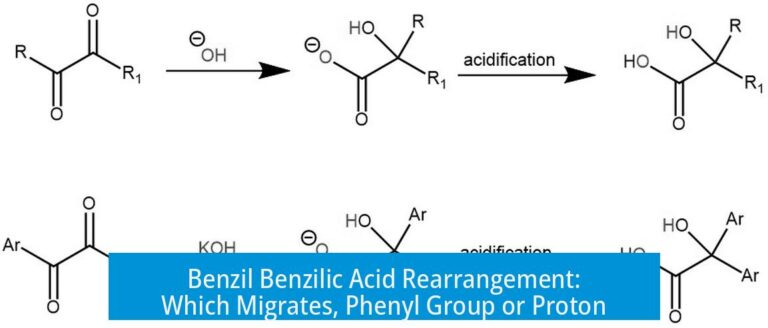How to Make Orange Essential Oil and Water Extract by Home Distillation

To make orange essential oil and water extract at home, utilize fresh navel oranges with thick, fragrant peels, grate off the zest with minimal pith, and perform steam distillation using a suitable distillation apparatus. Boil a water and peel mixture to generate steam, then condense it to collect the oil-water mixture. Separate the essential oil from the water using a separatory funnel, expecting roughly 1 milliliter of oil per orange. Maintain appropriate water levels during distillation, use proper equipment such as a hot plate, boiling flask, and condenser, and manage steam flow to prevent reflux or juice contamination.
1. Preparation: Choosing and Preparing Oranges
Orange variety and freshness greatly influence the yield and quality of essential oil.
- Choose fresh, thick-skinned oranges. Navel oranges work best.
- To verify freshness, scratch the peel gently with a fingernail and smell. A strong, fresh orange fragrance indicates good quality. Avoid older, dried-out fruits as they yield less oil.
Preparing the peel is critical to avoid bitterness and impurities.
- Grate off just the outer zest layer carefully, minimizing the white pith beneath. Excess pith can degrade oil quality.
- Do not grind whole peels including much pith or pulp, as these reduce purity and may cause issues during distillation.
2. Distillation Method: Steam Distillation Setup at Home
Steam distillation is the recommended approach for extracting orange essential oil from peels at home. It preserves oil integrity better than solvent or Soxhlet extraction.
2.1 Essential Equipment
| Equipment | Purpose | Comments |
|---|---|---|
| Hot plate | Gently heats water to produce steam | Avoid open flames for safety |
| Boiling flask (>1L) | Holds water and grated peels; solid round body with flat bottom preferred | Should withstand boiling heat |
| Distillation head | Channels steam from flask to condenser | Thermometer optional but helps monitor temperature |
| Condenser (Liebig or Graham) | Condenses steam back to liquid | Choose horizontal or vertical based on workspace |
| Clamp stands and adapters | Support glassware and maintain junctions | Essential for stability during operation |
| Receiving flask and takeoff adapter | Collects condensed distillate (oil and water) | Glass recommended for best chemical resistance |
| Separatory funnel (plastic acceptable) | Separates essential oil from distillate water layer | Allows clean oil-water separation |
2.2 Equipment Cost and Alternatives

- Individual glassware pieces and hot plates can be sourced cumulatively for under $130.
- All-in-one chemistry glassware sets for distillation are available for roughly $200 on auction sites.
- Essential oil distillation kits exist but tend to be expensive relative to output volume.
- Purchasing commercially produced orange essential oil may be time- and cost-efficient, with bottles around $7 for 30 ml.
3. The Distillation Process: Step-by-Step
3.1 Loading the Flask
Fill the boiling flask roughly halfway or slightly more with water.
- Add the grated orange peel zest (without pith) to the water.
- This creates a steam mixture containing volatile orange oils.
- Avoid overfilling to prevent burning or boiling over.
3.2 Operational Parameters
- Heat on the hot plate until water boils and generates steam carrying the essential oils.
- Steam travels through the distillation head to the condenser.
- Condensed liquid collects in the receiving flask as oil-water mixture.
- Watch for steam refluxing back into the flask, which signals setup or heat balance issues.
3.3 Common Troubleshooting
- If steam is rolling back down into the flask instead of moving forward, check distillation head angle and connections.
- Ensure steam flow is steady but not violent enough to push juice or peel particles into the condenser.
- Adjust heat to maintain gentle boiling.
- If juice rises into the condenser, reduce peel quantity or water volume and stir gently before heating.
3.4 Collecting and Separating the Extracts
The distillate separates naturally into two layers in the receiving flask:
| Layer | Contents | Density |
|---|---|---|
| Top layer | Orange essential oil (hydrophobic) | Lighter than water, floats on top |
| Bottom layer | Orange blossom water and other water-soluble compounds | Heavier and below oil layer |
Use the separatory funnel to fractionate the oil layer from the water extract.
3.5 Yield Expectations and Extraction Duration
- A single average navel orange produces about 1 milliliter of essential oil.
- Extraction time varies but monitor until oil collection slows significantly.
- Discard remaining plant material after distillation.
4. Tips and Recommendations
- Use only thick orange zest without pith to maximize oil purity.
- Carefully maintain water level and heat control during distillation for consistent steam flow.
- Utilize a thermometer in the distillation head to monitor vapor temperature if possible; orange oil vaporizes around 150-180 °C (302-356 °F).
- Handle glassware carefully to avoid leaks or breakage during setup.
- After distillation, store essential oil in dark glass bottles away from heat and sunlight.
5. Alternatives and Considerations
Homemade distillation requires time, practice, and investment in equipment. It is:
- Less efficient than industrial extractions.
- Labor intensive and low yielding for oil volume versus raw material.
- More costly when considering equipment and time versus commercial oil purchase.
For aromatherapy or cooking uses, reputable essential oils from brands like Gyalabs, Dottera, or Young Living offer standardized and quality-controlled products.
Summary of Key Points
- Use fresh navel oranges with fragrant, thick peels.
- Grate zest off the peel with minimal pith.
- Perform steam distillation using appropriate glassware: hot plate, boiling flask, head, condenser, and receiving flask.
- Load flask halfway with water plus grated zest; prevent burning and juice splashing.
- Maintain steady steam flow to carry essential oils into the condenser.
- Separate condensed oil from water with a separatory funnel.
- Expect ~1 milliliter oil per orange; monitor distillation duration carefully.
- Consider buying commercial oils for better time and cost efficiency.
What type of oranges should I use for the best essential oil yield?
Choose fresh, thick-rind navel oranges. Check freshness by scratching the peel lightly and smelling for a strong, fresh scent. Avoid older oranges as they dry out and produce less oil.
How do I prepare the orange peels for distillation?
Grate off only the orange zest, avoiding the white pith beneath. The pith affects oil quality and can reduce yield. Using just the zest gives better purity and scent.
What is the most effective distillation method for home extraction?
Steam distillation is preferred for extracting orange essential oil at home. It involves boiling water with grated peels and collecting the steam, which carries the oil for condensation.
How should I set up my distillation equipment at home?
You need a boiling flask, distillation head, condenser (Liebig or Graham), and a receiving flask. Use a hot plate, not open flame. A separatory funnel helps separate oil from water.
How do I separate the essential oil from the water extract after distillation?
Collect the condensed liquid in a flask then use a plastic or glass separatory funnel. The oil floats on top and can be separated easily from the water layer.
What quantity of oil can I expect from one orange using this method?
One average fresh orange typically yields about 1 milliliter of essential oil through steam distillation. Yield depends on freshness and preparation of the peel.





Leave a Comment